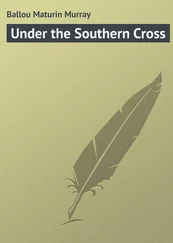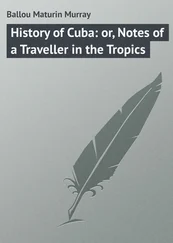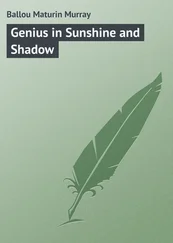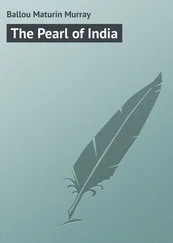Maturin Ballou - Due South - or, Cuba Past and Present
Здесь есть возможность читать онлайн «Maturin Ballou - Due South - or, Cuba Past and Present» — ознакомительный отрывок электронной книги совершенно бесплатно, а после прочтения отрывка купить полную версию. В некоторых случаях можно слушать аудио, скачать через торрент в формате fb2 и присутствует краткое содержание. ISBN: , Жанр: foreign_prose, на английском языке. Описание произведения, (предисловие) а так же отзывы посетителей доступны на портале библиотеки ЛибКат.
- Название:Due South: or, Cuba Past and Present
- Автор:
- Жанр:
- Год:неизвестен
- ISBN:http://www.gutenberg.org/ebooks/30130
- Рейтинг книги:4 / 5. Голосов: 1
-
Избранное:Добавить в избранное
- Отзывы:
-
Ваша оценка:
- 80
- 1
- 2
- 3
- 4
- 5
Due South: or, Cuba Past and Present: краткое содержание, описание и аннотация
Предлагаем к чтению аннотацию, описание, краткое содержание или предисловие (зависит от того, что написал сам автор книги «Due South: or, Cuba Past and Present»). Если вы не нашли необходимую информацию о книге — напишите в комментариях, мы постараемся отыскать её.
Due South: or, Cuba Past and Present — читать онлайн ознакомительный отрывок
Ниже представлен текст книги, разбитый по страницам. Система сохранения места последней прочитанной страницы, позволяет с удобством читать онлайн бесплатно книгу «Due South: or, Cuba Past and Present», без необходимости каждый раз заново искать на чём Вы остановились. Поставьте закладку, и сможете в любой момент перейти на страницу, на которой закончили чтение.
Интервал:
Закладка:
In the harbor, next morning, a sunken wreck was pointed out to us, which was partially visible at low tide, not far from the shore. Only the ribs and stanchions are still held together by the stout keel timbers and lower sheathing. This wreck has lain there unheeded for years, yet what a story these old timbers might tell, had they only a tongue with which to give voice to their experience! – literally the experience of ages. We refer to the remains of the old St. Paul, one of the ships of the great Spanish Armada that Philip II. sent to England in 1588, being one of the very few of that famous flotilla that escaped destruction at the time. What a historical memento is the old wreck! After a checkered career, in which this ancient craft had breasted the waves of innumerable seas and withstood the storms of nearly three centuries, she was burned to the water's edge here in the harbor of Santiago a few years since, and sunk, where her remains now lie, covered with slime and barnacles, – a striking emblem of the nation whose flag she once proudly bore. During the last years of her career afloat she was used for transporting troops from Europe, and as a Spanish guard-ship in these seas by the local government. It is doubtful if it is generally known that this relic of the Spanish Armada is in existence. Curio-hunters, once put upon the scent, will probably soon reduce these ancient timbers to chips, and a crop of canes and snuff-boxes, more or less hideous and more or less counterfeit, will ensue.
Here we got our first experience of the present currency, – the valueless circulating medium of Cuba. When one has occasion to visit the island it is best to take American funds, either in bank-bills or gold, sufficient to meet all ordinary expenses. Our bank-bills and our gold are both at a premium. This will also save all necessity for drawing on home through any local bankers, who have a way of charging for the accommodation quite after the style of everything Spanish. The hotel-keepers will require their pay on the basis of Spanish gold, but will cheerfully allow a premium of six per cent. on American gold or American bank-bills. As to the banks in Cuba, all are shaky, so to speak; several have lately failed, and the others might as well do so. It is not long since the president of the Havana Savings Bank placed a pistol at his temple and blew his brains out. Mercantile credit may be said to be dead, and business nearly at a standstill. Commercial honesty is hardly to be expected from a bankrupt community, where the people seem only to be engaged in the sale and purchase of lottery tickets, a habit participated in by all classes.
What little gold and silver coin there is found in circulation is mutilated; every piece of money, large and small, has been subjected to the ingenious punch, and thus has lost a portion of its intrinsic value. American gold and silver, not having been thus clipped, justly commands a six per cent. premium.
The circulating medium upon the island is paper scrip, precisely similar to that used in this country before the resumption of specie payment. This scrip is dirty beyond endurance, and one absolutely hesitates to take it in making change.
When our currency became soiled and torn we could exchange it for new, but there is no such facility in Cuba. One dollar of our money will purchase $2.45 of this scrip. It passes current, and really seems to answer the necessities of trade, but even the Cubans are not deceived by it. They know that it is really worthless, being based upon nothing, and issued indiscriminately by a bankrupt government. The paper-mill grinds it out in five, ten, twenty, and fifty cent pieces as fast as it can be put into circulation, while no one knows how much has been issued. But one thing is known; namely, that every authorized issue of a given sum has been enormously exceeded in amount.
Within about five years, or less, an issue of bank-bills and of this small currency was entrusted to an establishment in the United States, when fourteen millions of dollars were printed in addition to the amount authorized! All were duly receipted for and signed by corrupt Spanish officials, who coolly divided these millions among themselves! The Captain-General of Cuba during whose administration this financial stroke was accomplished came to the island a poor man, and returned to Spain in two years possessed of three million dollars!
There is no more beautiful or safe harbor in the world than that of Santiago de Cuba, commercially speaking, as it is completely land-locked and protected on all sides from storms; but for the same reason it is as close and hot an anchorage as can be found in the tropics. An intelligent resident gave us 80° Fahrenheit as the average temperature of the year, though the thermometer showed a more ambitious figure during our brief stay. There are but two seasons, the wet and the dry, the latter extending from September to May. The city might have an excellent water supply if there were sufficient enterprise among the citizens to cause it to be conducted by pipes from the springs in the neighboring hills. It is now wretchedly deficient in this respect, causing both suffering and ill health in a climate especially demanding this prime necessity of life.
CHAPTER III
Doubling Cape Cruz. – Trinidad. – Cienfuegos. – The Plaza. – Beggars. – Visit to a Sugar Plantation. – Something about Sugar. – An Original Character. – A Tropical Fruit Garden. – Cuban Hospitality. – The Banana. – Lottery Tickets. – Chinese Coolies. – Blindness in Cuba. – Birds and Poultry. – The Cock-Pit. – Negro Slavery, To-Day. – Spanish Slaveholders. – A Slave Mutiny. – A Pleasant Journey across the Island. – Pictures of the Interior. – Scenery about Matanzas. – The Tropics and the North contrasted.
To reach Cienfuegos, our next objective point, one takes water conveyance, the common roads in this district being, if possible, a degree worse than elsewhere. It is therefore necessary to double Cape Cruz, and perform a coasting voyage along the southern shore of the island of about four hundred miles. This is really delightful sailing in any but the hurricane months; that is, between the middle of August and the middle of October. It would seem that this should be quite a commercial thoroughfare, but it is surprising how seldom a sailing-vessel is seen on the voyage, and it is still more rare to meet a steamship. Our passage along the coast was delightful: the undulating hills, vales, and plains seemed to be quietly gliding past us of their own volition; the tremor of the ship did not suggest motion of the hull, but a sense of delight at the moving panorama so clearly depicted. No extensive range of waters in either hemisphere is so proverbially smooth as the Caribbean Sea, during eight months of the year, but a stout hull and good seamanship are demanded during the remaining four, especially if coming from the northward over the Bahama Banks and through the Windward Passage, as described in these chapters.
The city of Trinidad, perched upon a hillside, is passed at the distance of a few miles, being pleasantly situated more than a league from the coast. The town of Casilda is its commercial port. This arrangement was adopted in the early days as a partial protection against the frequent inroads of the buccaneers, who ceased to be formidable when separated from their ships. Trinidad was once the centre of the prosperous coffee trade of Cuba, but is now, and has been for many years, commercially wrecked. It is very beautifully located, with Mount Vijia for its background, in what is declared to be the healthiest district upon the island. But it is an ancient city, comparatively deserted, its date being nearly contemporary with that of Santiago. Cienfuegos, its successful business rival, is on the contrary quite modern, exhibiting many features of thrift and activity, and is counted the third commercial city of Cuba. Like Cardenas, it is called an American capital. It has some twenty-five thousand inhabitants, a large proportion of whom speak English, nine tenths of its commerce being with the United States. In this immediate neighborhood Columbus, on his second voyage, saw with astonishment the mysterious king who spoke to his subjects only by signs, and that group of men who wore long white tunics like the monks of mercy, while the rest of the people were entirely naked. The town is low and level, occupying a broad plane. The streets are of fair width, crossing each other at right angles, and are kept neat and clean. The harbor is an excellent and spacious one, admitting of vessels being moored at the wharves, a commercial convenience unknown at Santiago, Matanzas, or Havana. The navies of all the world might rendezvous here and not crowd each other. Three rivers, the Canudo, Saludo, and Danuyi, empty into the bay, and each is navigable for a considerable distance inland, a matter of great importance in a country so devoid of good roads. The parti-colored houses are of the usual Cuban type, mostly of one story, built with a patio or open courtyard in the centre, well filled with flowering plants, among which were observed the attractive coral-tree, which resembles a baby palm, and the universal banana.
Читать дальшеИнтервал:
Закладка:
Похожие книги на «Due South: or, Cuba Past and Present»
Представляем Вашему вниманию похожие книги на «Due South: or, Cuba Past and Present» списком для выбора. Мы отобрали схожую по названию и смыслу литературу в надежде предоставить читателям больше вариантов отыскать новые, интересные, ещё непрочитанные произведения.
Обсуждение, отзывы о книге «Due South: or, Cuba Past and Present» и просто собственные мнения читателей. Оставьте ваши комментарии, напишите, что Вы думаете о произведении, его смысле или главных героях. Укажите что конкретно понравилось, а что нет, и почему Вы так считаете.












